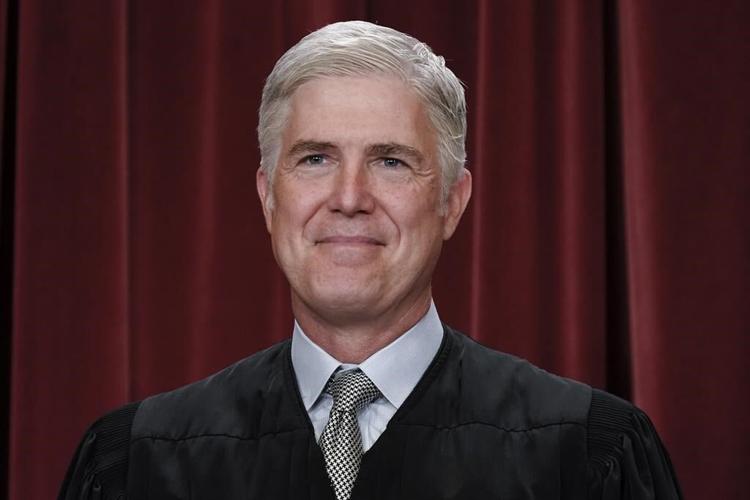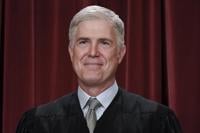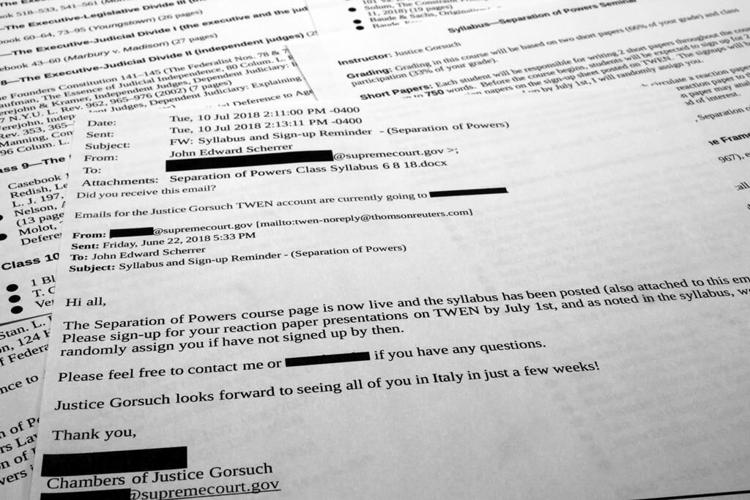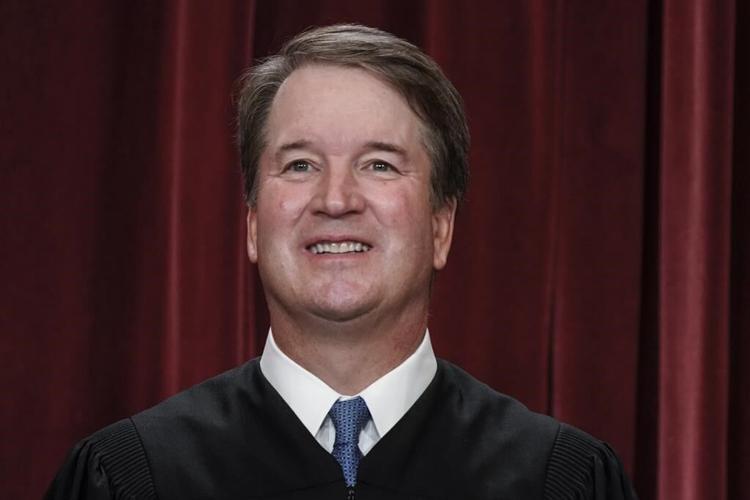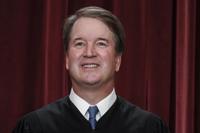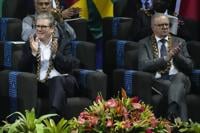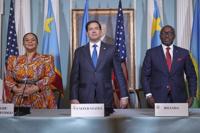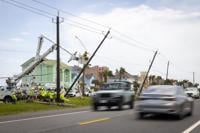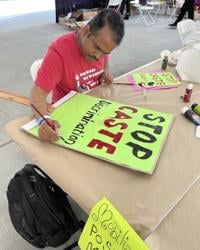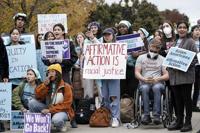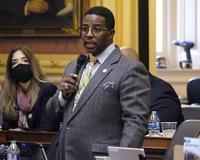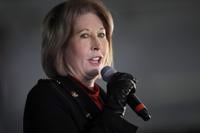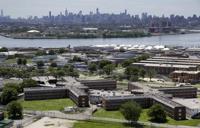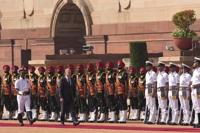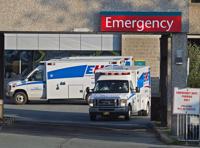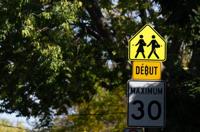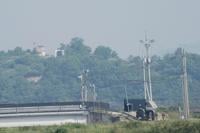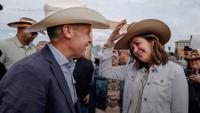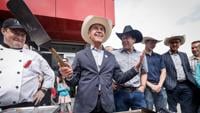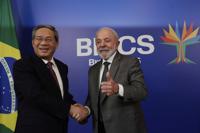WASHINGTON (AP) — For decades, the University of Hawaii law school has marketed its Jurist-In-Residence program to the Supreme Court as an all-expenses-paid getaway, with the upside of considerable “down time” in paradise.
The justices have enthusiastically participated.
“Your colleagues who were here most recently were Justices (Ruth Bader) Ginsburg, (Anthony) Kennedy, and (Stephen) Breyer, and I believe they all would recommend the experience highly,” the law school's then-Dean Aviam Soifer wrote in a 2010 email trying to draw to the school in Honolulu. “We will, of course, cover first-class airfare, excellent hotel accommodations, and all other travel expenses.”
“Should we have hope of having the Justice here while the icy winds blow in Washington?” he wrote in another. In a follow-up before the justice's 2012 visit, he included the salutation “Warm (and yet comfortable) greetings from paradise.”
Teaching is encouraged as a way to demystify the nation’s highest court while exposing the justices to a cross-section of the public. For decades, they have traveled the globe during court recesses to lecture. It is a permissible practice so long as their earning are less than the court's roughly $30,000 cap on outside income.
In a statement responding to questions, the Supreme Court noted the $30,000 figure and added that “teaching must be at an accredited educational institution or continuing legal educational program and must be approved in advance by the Chief Justice (or by the Associate Justices if it involves teaching by the Chief Justice).”
Documents through reveal that some all-expenses-paid trips — to Italy, Iceland and Hawaii, among others — are light on classroom instruction, with ample time carved out for the justices’ leisure.
“This is a level of luxury that most Americans will never see. And the fact that the justices are receiving it by virtue of their positions seems to be outside ethical bounds,” said Gabe Roth, the executive director of Fix the Court, a nonpartisan watchdog group dedicated to following the Supreme Court.
The particulars of these excursions are often shrouded from public view because the justices are only required to offer a spare accounting on their annual financial disclosure forms.
But reveal that these trips, which would cost the justices thousands of dollars if paid out of pocket, are in some cases subsidized by anonymous donors to the schools whose motivations can be difficult to assess.
Dan Meisenzahl, a spokesman for the University of Hawaii, said the school is so isolated from the continental United States that offering first-rate accommodations to the justices is one way to ensure they will make the trip.
“As a public university in one of the most isolated places on Earth, our Jurist-In-Residence program would not be possible without our donors and we thank them for their support.” Meisenzahl said in a statement.
While locking in details before Justice Samuel Alito’s 2011 visit to Honolulu, a University of Hawaii law school official, Cyndi Quinn, promoted the program’s flexibility.
“We would like to propose a schedule that suits his preference (eg. time of day to start, other activities such as golf, snorkeling, hiking, cano(e) paddling, etc.) as well as activities and visits Mrs. Alito would prefer,” Quinn wrote Alito’s staff. “What I do recall is that Justice Alito would prefer starting his day after 10 am and leave some ‘down time’ for some much needed, no doubt, rest and relaxation?”
Besides Ginsburg, Kennedy, Alito and Breyer, Antonin Scalia and Sotomayor are the other justices who served on the court in the last decade and who participated in the program, which the local law firm Case Lombardi currently helps sponsor.
Emails and other records provided by the school show the justices often taught a handful of classes, met with local dignitaries and frequently dined — with the exception of Sotomayor — at private clubs or the private residences of prominent school donors. Sotomayor’s staff was adamant in emails to the school that she thought it inappropriate to be mingling with donors.
Hawaii is just one of the places where academics and tourism have been a draw.
Soon after being seated on the Supreme Court, Justices Neil Gorsuch and Brett Kavanaugh joined the faculty of the Antonin Scalia School of Law at George Mason University in Virginia.
As required, they both reported their teaching contracts and compensation, which climbed to about $25,000 a year. But the justices were not a regular presence at the school’s Arlington, Virginia, campus, which lies just across the Potomac River from the Supreme Court.
Instead, they were sent to classrooms in Italy, Iceland and England, according to emails and other documents, which show the public university also paid the justices' travel and living expenses there.
Under the arrangement, Gorsuch and Kavanaugh, nominated to the court by President Donald Trump, each taught a roughly two-week-long summer course that largely limited hours of instruction to mornings, leaving them and their families ample time for leisure and exploration.
“To be clear, providing a full semester’s worth of content in a compressed timeframe is a significant time commitment,” said Ken Turchi, an associate dean for the law school, who called the program a “highly compelling opportunity” for students.
Their contracts coincided with a significant expansion of the law school made possible through tens of millions of dollars in contributions from conservative donors, some of whom gave anonymously through George Mason's foundation.
A $20 million contribution from an anonymous donor in 2016, which has been widely reported, was made contingent on renaming the school for Scalia, as well as hiring roughly a dozen new faculty members, according to records the school previously released. To ensure the school complied with the agreement, the donor and the school agreed that Leonard Leo, then an executive vice president of the Federalist Society, would serve as an overseer, records show. An additional $10 million was contributed through the arrangement by the Charles Koch Foundation, which was founded by billionaire conservative donor Charles Koch.
Turchi said none of the donations that the school or its foundation has accepted were made contingent upon hiring the justices.
The university has “sole and absolute discretion to determine and carry out all selection, research, scholarship, teaching, and service at the school,” Turchi said in an email. “While the school committed to increase our faculty and name the school, any suggestion that any donor or third party had oversight over who was hired is inaccurate and factually unfounded.”
Since joining the faculty in 2018, Gorsuch has regularly taught in Padua, Italy, where George Mason officials paid for his airfare, which cost $8,313 in 2022, and an apartment that cost $5,359 to rent, records show. Side trips paid for by the school included trips to Bologna, a culinary destination city, as well as nearby Venice, known for its palazzos, architecture and canals.
In 2021, Gorsuch taught his course in Reykjavik, Iceland, where Justice Elena Kagan, nominated by President Barack Obama, joined him. Though Kagan taught for one day, the school covered the cost of her travel and lodging for her nearly weeklong stay.
Kavanaugh, meanwhile, taught outside London in 2019, staying near Runnymede, where the Magna Carta was signed, records show. Documents detailing the cost of the trip were not included in records provided by the school, many of which were redacted. After teaching from a western Pennsylvania resort at the height of the coronavirus pandemic in 2020, Kavanaugh taught a short summer course at the school's Virginia campus in 2021, followed by a three-day course there in 2022, which paid $16,895, records show.
But soon he resumed teaching abroad.
This year, Kavanaugh, as well as Justice Amy Coney Barrett, another Trump nominee, co-taught weeklong classes abroad through the University of Notre Dame’s London Law Program.
Like other private schools that have hosted the justices abroad, Notre Dame is not subject to public records laws, and school officials declined to comment.
___
The Associated Press receives support from several private foundations to enhance its explanatory coverage of elections and democracy. See more about the AP’s democracy initiative . The AP is solely responsible for all content.
___
Follow the AP's coverage of the U.S. Supreme Court at .

